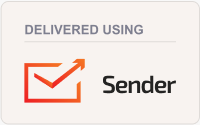Youth Prevention Influencers (YPI) is a project of the Rotary Action Group for Addiction Prevention (https://www.rag-ap.org) that was developed in collaboration with:
Why?
This provides an alternative to the rapid obsolescence factor of current prevention programs, which not only become out of date quickly, but also lose their evidence-based status, in the longer term, due to lack of re-evaluation.
The project also closely aligns with mental health issues, as addiction prevention is part of the field of Mental Health.
How does the PYI’s program Work?
The Youth Prevention Influencers project invests in young people. They should be between the ages of 18-25 can be selected by Rotary clubs in collaboration with professional prevention organizations. They must be committed to sharing their knowledge of addiction harms and to learning about possible routes of prevention. The ability to communicate and related to their peer group and local community should be demonstrated. Then they are:
- trained in the principles of addiction and prevention by trained professional prevention workers.
- Following their training, the candidate Youth Prevention Influencers are supported by the Rotary Clubwhich selected them to develop and implement their own actions in their own (youth) environment and in their own way.
The program provides for scientific follow-up by Hogent's research centre Substance use and Psychosocial Risk Behaviours (SUPRB - view site - research centre, enabling young people to learn quickly and adjust their project, even in full action.
Following successful training they may be invited to attend the United Nations meeting of the Youth Prevention Influencers in Vienna, where the young people brainstorm among themselves, learn from each other, evaluate and adjust in order to continue working on new ideas.
For more go to: https://www.rag-ap.org/en
